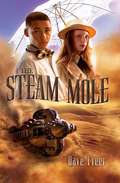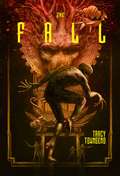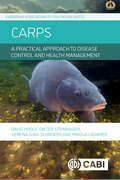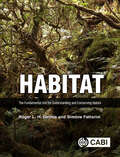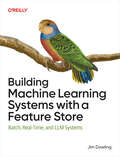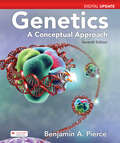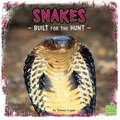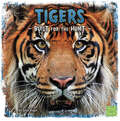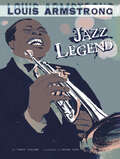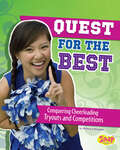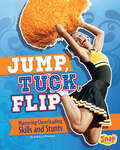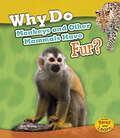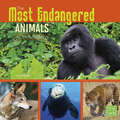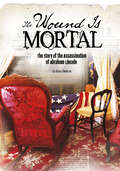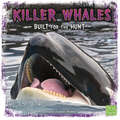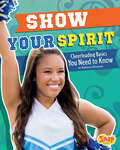- Table View
- List View
Keepers (Project Earth #2)
by Brenda CooperTwo sisters, one from a megacity and one from the wilderness, work together to protect the wilderness and the reintroduction of wolves from a group more interested in private property than public good. In a future Earth that's run by brilliant green cities separated by open land held in common for the good of wild things, two sisters must work together across and between the vastly different environments to root out dangers to both. They must protect the cities and the wild from the Returners, who prefer the toxic past to the difficult present. The older sister, Lou, her protector Shuska, and biologist friend Matchiko have reputations as successful rugged environmentalists. They must stay safe, listen, work, and sleuth out hidden nests of Returners. Oh, and save a few wolves along the way. In the meantime, Lou's younger sister, Coryn, is learning that working for the most powerful woman behind the scenes in a megacity is far harder than it looks. When the Returners threaten the city, the sisters must find a way to preserve both their ways of life. Keepers asks, Do humans have enough creativity, responsibility, and generosity to survive?
Steam Mole (Cuttlefish)
by Dave FreerThis new steampunk adventure is a race around the world. Tim Barnabas is a submariner from the Cuttlefish, a coal fired submarine. Clara Calland is the daughter of a scientist who carries a secret formula that threatens British Imperial power. After a daring chase across the globe, they have brought the secret to Westralia. Here, much of Australia is simply too hot to be habitable by day. People are nocturnal, living underground and working outside at night. To cross the deserts they use burrowing machines know as "steam moles." With the Cuttlefish out of action, her crew takes jobs on these submarine-like craft. Duke Malcolm, of the Imperial Security Service, transports Clara's rebel-father to a prison in Eastern Australia, hoping to bait her into attempting a rescue. Clara looks to Tim for help, only to find he has fled a racist incident into the desert. She takes a steam mole in search of him. The two head to Eastern Australia, where they discover an invading force with plans to take Westralia. Forced to survive in the desert, they encounter the intolerance meted out to the aboriginal people. Can they save Westralia from falling under British rule? And should they?"
Fall (Thieves of Fate #2)
by Tracy TownsendAn apothecary clerk and her ex-mercenary allies travel across the world to discover a computing engine that leads to secrets she wasn't meant to know--secrets that could destroy humanity. Eight months ago, Rowena Downshire was a half-starved black market courier darting through the shadows of Corma's underside. Today, she's a (mostly) respectable clerk in the Alchemist's infamous apothecary shop, the Stone Scales, and certainly the last girl one would think qualified to carry the weight of the world on her shoulders a second time. Looks can be deceiving. When Anselm Meteron and the Alchemist receive an invitation to an old acquaintance's ball--the Greatduke who financed their final, disastrous mercenary mission fourteen years earlier--they're expecting blackmail, graft, or veiled threats related to the plot to steal the secrets of the Creator's Grand Experiment. They aren't expecting a job offer they can't refuse or a trip halfway across the world to rendezvous with the scholar whose research threw their lives into tumult: the Reverend Doctor Phillip Chalmers. Escorting Chalmers to the Grand Library of Nippon with her mismatched mercenary family is just a grand adventure to Rowena until she discovers a powerful algebraic engine called the Aggregator. The Aggregator leads Rowena to questions about the Grand Experiment she was never meant to ask and answers she cannot be allowed to possess. With her reunited friends, Rowena must find a way to use the truths hidden in the Grand Library to disarm those who would hunt down the nine subjects of the Creator's Grand Experiment, threatening to close the book on this world.
Tall Is Her Body
by Robert de ChevotiereReaders of Black Cake and Family Lore will be captivated by this sweeping, multicultural family story of keen observation and the supernatural in which one man&’s journey to wholeness—both emotionally and physically—is shaped by the lands of his childhood and those of his ancestors, still reeling from the effects of colonialism and immigration. Before the oracular gadèt-zafè came to warn his mother she would die, 6-year-old Fidel knew only the everyday mystery of the Guadeloupe around him. The lush greenery, the dusty roads, the sugar cane growing and the neighbors arguing, the push and pull of love and resentment between people who rely on each other—his world is small but full. Until a few moments of violence change his life forever. Orphaned, Fidel returns to his mother&’s native Dominica and whirls from one relative and reality to another, learning pieces of his own story. His heritage is one of layered secrets and sharp divisions—between the grandmothers who love him and the aunt who wants him dead, the Catholic orthodoxy of his school and the Obeah knowledge of his grandfather, and the indigenous and the colonial. The violence he&’s witnessed inhabits not only strangers but himself. The spirits of the dead visit him with advice, threats, and explanations. And when he sees a path toward happiness in Canada, he must reconcile his intense, bittersweet love of his home with the possibility of leaving it.
A Vineyard Christmas (A Vineyard Novel #1)
by Jean StoneA woman's first Christmas on Martha's Vineyard comes with a mysterious surprise gift in a heartfelt novel that “brims with holiday cheer” (Library Journal).In her cozy rented cottage on Chappaquiddick, novelist Annie Sutton is finally following her dream of living on Martha's Vineyard. As she settles in for her first Vineyard winter, a fierce nor'easter brings high winds and deep snow. But the blizzard also brings something unexpected to Annie's front porch: a baby girl in a basket. The note reads: “I named her Bella, after my grandmother. Please help her, because I can't.”Annie has always been grateful for her adoptive parents who raised her as their own. Yet she now hopes to spare little Bella the feelings of abandonment that still haunt her. Rather than take the baby to the police, Annie tries to find the birth mother, giving her a chance to change her mind.But it's not easy keeping a secret in a close-knit island community, especially amid the bustle of Christmas. Before the holiday ends, there will be revelations, rekindled hope, and proof that families—the ones we are born into and the ones we claim for ourselves—are the gifts that truly matter.
Carps: A Practical Approach to Disease Control and Health Management
by David Hoole Dieter Steinhagen Verena Jung-Schroers Mikolaj AdamekThe prominence of the carp group of fish is widely recognised in three important economic areas: food production, recreation and the ornamental market. Carp species thus represent over 50% of world fish production and are vital to the economic stability of several countries and global regions. It is therefore crucial that the health of these cultured aquatic species is properly considered and maintained to ensure the sustainability of production and recent disease epidemics, for example grass carp reovirus infections in China and koi herpesvirus disease in Asia and Europe, have caused widespread and devastating effects on the aquaculture industries. This book thus examines how the diseases of carp species can be properly identified, monitored, treated and prevented. It specialises on the most prominent globally occurring carp species, such as Cyprinus carpio (common carp), the Carassius species, and the carp species that predominate in Europe and Asia, such as Ctenopharygodon idellus (grass carp), Hypophthalmichthys molitrix (silver carp), and Hypophthalmichthys nobilis (bighead carp). It also looks at the more specialised production of certain species, for example Catla catla (Catla) and Labeo rohita (Roho), in the Indian subcontinent. With the continuing importance of the carp group of fish, this user-friendly book presents a practical approach to disease diagnosis and treatment that covers both infectious and non-infectious diseases. The detail included about disease, clinical signs and the application of control strategies, such as management practices, therapeutics or vaccination, is an effort to considerably improve general fish health and welfare.
Habitat: The Fundamental Unit for Understanding and Conserving Nature
by Professor Roger L Dennis Simone FattoriniHabitat is the fundamental unit for understanding species ecology and preserving biodiversity; it has always had a variety of meanings often not explicitly defined. This important book focuses on the two main uses of the term and their importance for nature conservation. The first, traditional usage (TH), is that of terrestrial, aquatic or aerial spatial units which can be denoted by the species they host, with associated trophic relationships and interdependencies. The second, termed resource-based habitat (RBH), focuses on any one species' habitat. These RBHs are rarely limited to one space but are defined by the intersection of appropriate resources and suitable conditions. Since the ability of individuals to exploit resources is influenced by their own unique combination of traits, the RBH is spatially and temporally variable. The book explores how communities are structured, how species and individuals interact (niches, guilds, food webs, etc.), and how biodiversity changes over space and time. Typically, a location distinguished by specific attributes (TH; a meadow, a wood, a field, etc.) has few common species, but many rare ones and the book explores this long challenging conundrum. The TH usage has immense importance and implications for maintaining wildlife. Because of the variety of the ecological characteristics of different species, the study of them in distinctive spatial units (a lake, a moor, the seashore, the lower atmosphere, etc.) requires special methods in each case to determine their conservation status. The RBH is critical for understanding the factors necessary for the maintenance of 'focal' species, regarded as key or rare elements of ecosystems. The book explores the different ways in which such species are maintained: i.e., their traits, defining their ecological and behavioural uniqueness, morphology, physiology, biochemistry, and the resources-and conditions-on which they depend. It also examines how, as specialists or generalists, species are placed in the trophic hierarchy, how they fit into their communities and influence the evolution (or demise) of other species. Ultimately, the book investigates how best to conserve biodiversity.
Visualizing Generative AI: How AI Paints, Writes, and Assists
by Valliappa Lakshmanan Priyanka VergadiaGenerative AI has the potential to innovate and evolve business processes, but workers are still figuring out how to build with, optimize, and prompt GenAI tools to fit their needs. And of course, there are pitfalls to avoid, like security risks and hallucinations. Getting it right requires an intuitive understanding of the technology’s capabilities and limitations. This approachable guidebook helps learners of all levels navigate GenAI—and have fun while doing it. Loaded with insightful diagrams and illustrations, Visualizing Generative AI is the perfect entry point for curious IT professionals, business leaders who want to stay on top of the latest technologies, students exploring careers in cloud computing and AI, and anyone else interested in getting started with GenAI. You’ll traverse the generative AI landscape, exploring everything from how this technology works to the ways organizations are already leveraging it to great success. Understand how generative AI has evolved, with a focus on major breakthroughs Get acquainted with the available tools and platforms for GenAI workloads Examine real-world applications, such as chatbots and workflow automation Learn fundamentals that you can build upon as you continue your GenAI journey
Building Machine Learning Systems with a Feature Store: Batch, Real-Time, and LLM Systems
by Jim DowlingGet up to speed on a new unified approach to building machine learning (ML) systems with a feature store. Using this practical book, data scientists and ML engineers will learn in detail how to develop and operate batch, real-time, and agentic ML systems. Author Jim Dowling introduces fundamental principles and practices for developing, testing, and operating ML and AI systems at scale. You'll see how any AI system can be decomposed into independent feature, training, and inference pipelines connected by a shared data layer. Through example ML systems, you'll tackle the hardest part of ML systems&emdash;the data, learning how to transform data into features and embeddings, and how to design a data model for AI. Develop batch ML systems at any scale Develop real-time ML systems by shifting left or shifting right feature computation Develop agentic ML systems that use LLMs, tools, and retrieval-augmented generation Understand and apply MLOps principles when developing and operating ML systems
Genetics: Concepts And Connections
by Benjamin PierceGenetics: A Conceptual Approach 7e Digital Update serves as your trusty steward into the complex world of genetics.
Snakes
by Tammy GagneSome snakes squeeze their prey. Some snakes use their venom to kill their dinner. Whatever their style, snakes are deadly predators. Readers will learn about what makes snakes such amazing predators, from their hunting styles to what they like to eat. Fun Facts and an Amazing but True section will thrill readers and give them a closer look at the lives of these slithering creatures.
Tigers: Built For The Hunt (Predator Profiles Ser.)
by Julia VogelUsing their keen eyesight, amazing sense of smell, and sharp teeth and claws, tigers can stalk and kill prey twice their size. Readers will learn about what makes tigers such fearsome predators, from their hunting styles to what they like to eat. Fun Facts and an Amazing but True section will thrill readers and give them a closer look at the lives of these beautiful but deadly creatures.
Fatal Faults
by Eric BraunIn a narrative nonfiction format, follows people who experienced the Challenger tragedy and controversy.
Louis Armstrong
by Terry CollinsLouis Armstrong, also known as “Satchmo” and “Pops”, became an American jazz legend in the 1920s. His voice and skill with instruments helped him become a popular musician in a time where America was racially divided. Watch as this skilled musician learns to play, buys his first instrument, and becomes one of the best music makers of the era.
Quest for the Best: Conquering Cheerleading Tryouts And Competitions (Cheer Spirit Ser.)
by Rebecca Rissmancheerleading; tryouts; competition; advice
Jump, Tuck, Flip: Mastering Cheerleading Skills And Stunts (Cheer Spirit Ser.)
by Rebecca Rissmancheerleading; basic skills; stunts; arm positions; jumping; tumbling
Why Do Monkeys and Other Mammals Have Fur? (Animal Body Coverings Ser.)
by Holly BeaumontFind out all about fur and how it helps monkeys keep warm and survive. Discover how fur can be used as camouflage, how fur is different on different mammals and how fur changes as mammals grow up.
The Most Endangered Animals in the World (All About Animals Ser.)
by Tammy GagneAll endangered animals risk extinction, but some are closer to the brink of dying out than others. Give readers the details about the world's most endangered animals , including their ranges, habitats, appearances, and behaviors. Reasons are given for why the animals are dying out, as well as actions people are taking to save these amazing animals before it's too late. Large, colorful photos entice young readers while fact boxes support the text.
The Wound Is Mortal
by Jessica GundersonIn a narrative nonfiction format, follows the people who experienced the events surrounding the assassination of Abraham Lincoln.
Killer Whales
by Christine Zuchora-WalskeWith bodies designed to help them hide in the water, killer whales roam the ocean in search of their next meal. Readers will learn about what makes killer whales such deadly predators, from their hunting styles to what they like to eat. Fun Facts and an Amazing but True section will thrill readers and give them a closer look at the lives of these massive creatures.
Easter (Traditions & Celebrations)
by Nicole A. MansfieldEaster is about celebrating Jesus Christ dying and coming back to life. It is a Christian holiday. People attend church. They also gather for a big meal and activities like egg hunts. Readers will discover how a shared holiday can have multiple traditions and be celebrated in all sorts of ways.
Why Do Owls and Other Birds Have Feathers?
by Holly BeaumontFind out all about feathers and how they help owls fly, keep warm, hunt and survive. Discover how feathers are different on different birds and how they change as birds grow up.
Sharks: Built For The Hunt (Predator Profiles Ser.)
by Tammy GagneWith amazing speed and razor-sharp teeth, a shark is one of the deadliest hunters in the ocean. Readers will learn about what makes sharks such dangerous predators, from their hunting styles to what they like to eat. Fun Facts and an Amazing but True section will thrill readers and give them a closer look at the lives of these awesome creatures.
Crocodiles: Built For The Hunt (Predator Profiles Ser.)
by Tammy GagneWith shocking speed, a crocodile can lunge at its prey and grab it with its strong jaws and razor-sharp teeth. Readers will learn about what makes crocodiles such deadly predators, from their hunting styles to what they like to eat. Fun Facts and an Amazing but True section will thrill readers and give them a closer look at the lives of these awesome creatures.
Show Your Spirit: Cheerleading Basics You Need To Know (Cheer Spirit Ser.)
by Rebecca Rissmancheerleading; basic information; stunts; movements; chants; tumbling; uniforms; safety

